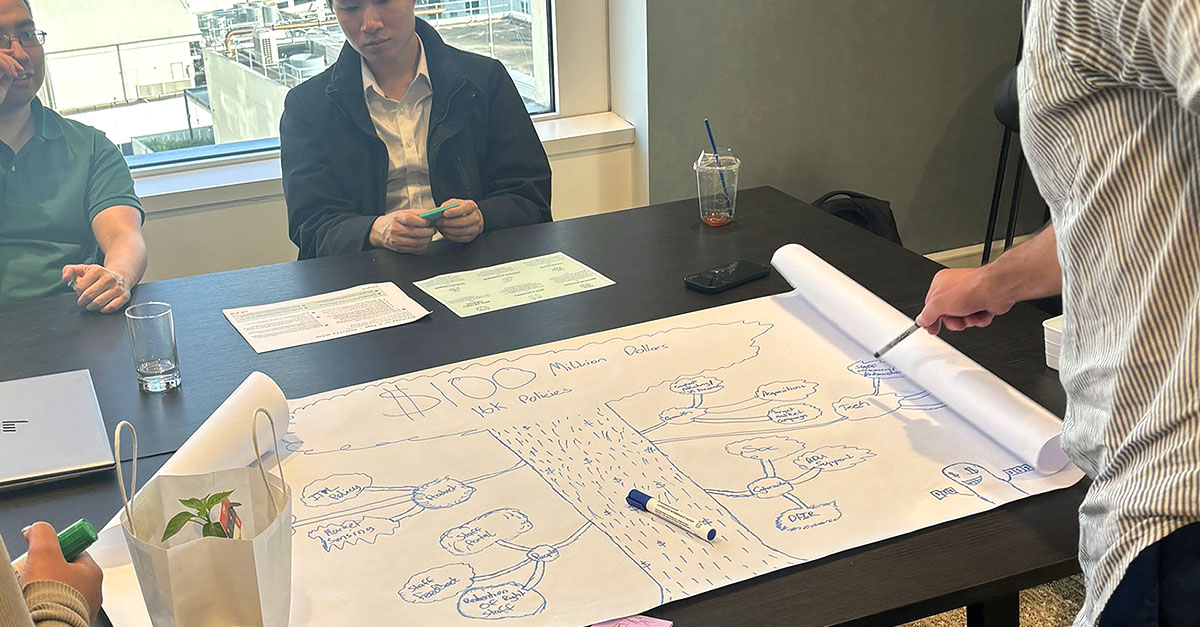What’s a rich picture?
A rich picture is a large, free-form diagram that helps you simplify, clarify, understand and communicate a complex situation. What kinds of complex situations, you might be wondering? In my experience, it’s mostly about showing systems and processes within organisations and teams, such as:
- How a team, product, service or business is organised, showing relationships and locations
- How an organisation’s efforts unite to achieve a desired impact
- How a complex process works, especially if it involves several teams and other processes
You might also hear these sorts of visuals referred to as visual summaries, mind maps, or sketchnotes. Another word I'm fond of is the Dutch word ‘praatplaat’ (literally ‘talking board’), which I learned while training a group in The Netherlands about how to do rich pictures.
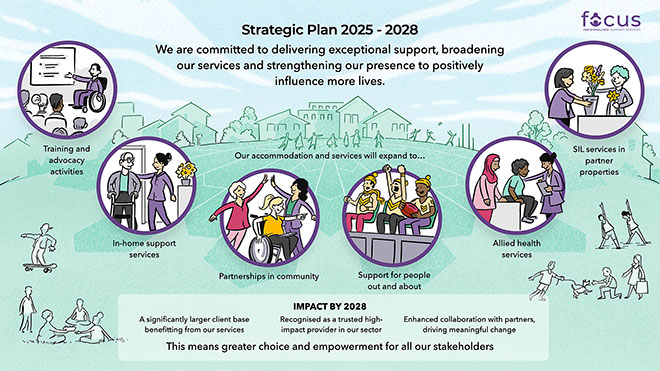
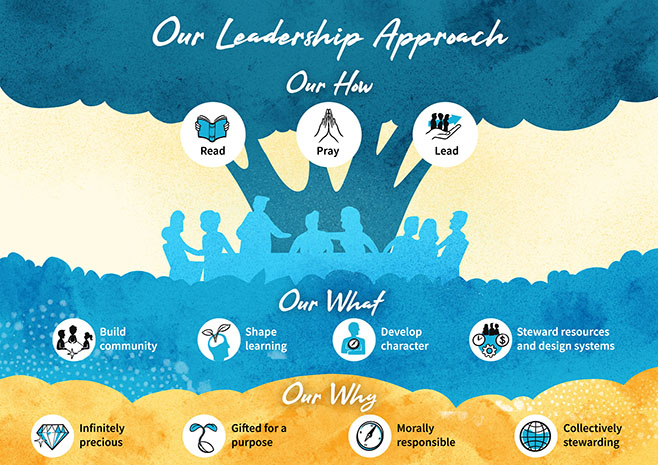
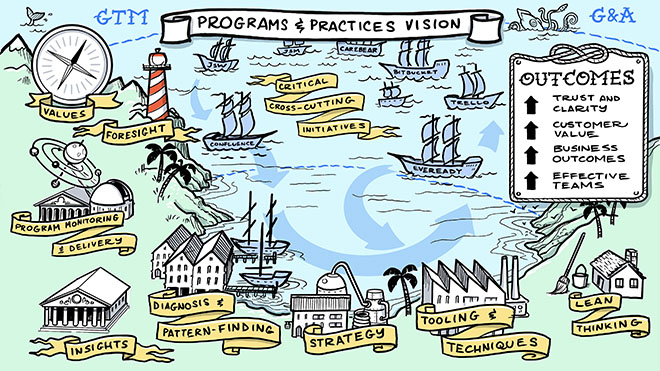
Three examples of rich pictures I have drawn
Rich pictures go beyond the usual sorts of template-driven diagrams you see in slide presentations; they’re rich because they often tell a visual story that includes pictures of people, arrows, speech balloons, visual metaphors, and perhaps a bit of drama and pathos. Yes they can work on a 16:9 slide, but they’re often better viewed on large paper.
Why use a rich picture?
The biggest benefit I see over and over again about rich pictures is that the process of creating one with a group of people is just as valuable (sometimes more valuable) than the final product. And besides, words (and template-driven diagrams!) can’t hold complexity alone. Rich pictures:
- Make the invisible visible. They reveal assumptions, gaps, and relationships that aren’t obvious in text or spreadsheets, or have different meanings in different teams
- Build shared understanding. Love this one! When teams draw together, they think together.
- Encourage empathy. Seeing stakeholders see other stakeholders represented visually provokes more authentic responses and understanding, and humanises systems that are often otherwise too abstracted.
- Spark insight. Oh yes! The process of talking, listening, sketching, reviewing, sketching over the top of sketching, invites questions and ideas that lead to better solutions and decisions.
- Communicate clearly. A well-crafted rich picture becomes a visual reference everyone can return to as the project (or other topic) evolves.

A rich picture usually starts as a conversation and a bunch of sketches on the whiteboard
Where and when to use rich pictures
We’re stuck! The most common situation that clients approach me to draw a rich picture for them is when they get to the point where they’re overwhelmed with ambiguity and complexity (about a project, a change process, their strategy, or some big inflection point in their business or team), and they’ dying to get some clarity, so that they can move forward with decision-making and implementation.
Let’s all get on the same page. Another situation is when clients need to explain something big and complex in a clear, simple way to their organisation, their customers or community. This often involves getting representatives from various parts of a system (directors, call centre staff, customers, you name it) to all contribute to a raw version together.
Whether it’s at the start of a project, or during a strategic offsite, or as part of shaping up a communication campaign, everyone always gets more value out of a rich picture than they werre expecting.
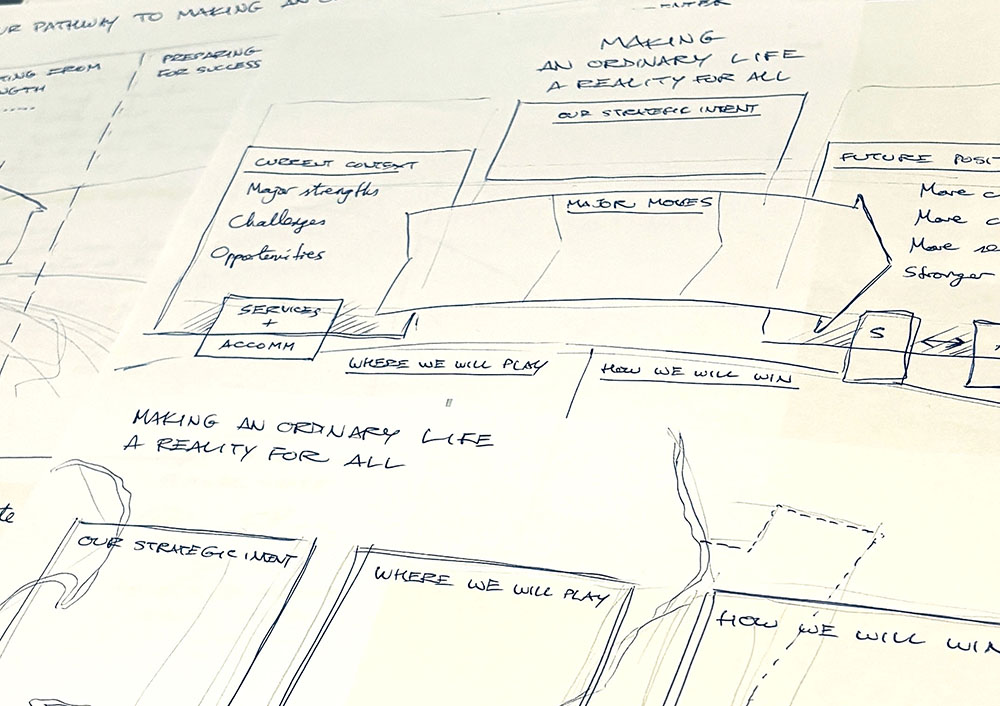
Several rough pencil drafts of a rich picture
Get to the simplicity you need on the other side of complexity
Drawing rich pictures is probably the most fulfilling part of my work, because I see so many people get unlocked, and so much momentum gained. A rich picture may well be the bridge you’ve been looking for, to get across to the clarity you’ve been after!
If your project feels tangled, or your stakeholders are speaking different languages, let’s draw it out together. Contact me for a no-obligation chat, I’d love to help you create a rich picture that moves your team forward.
